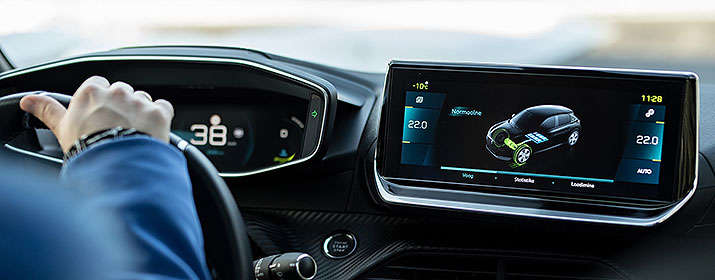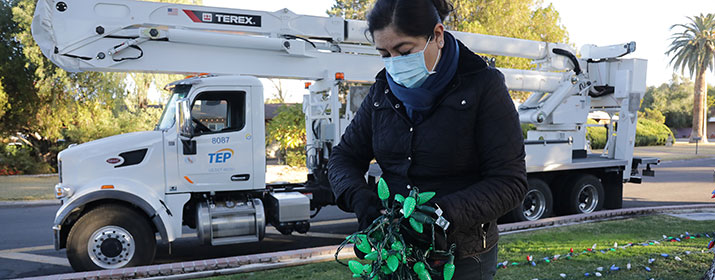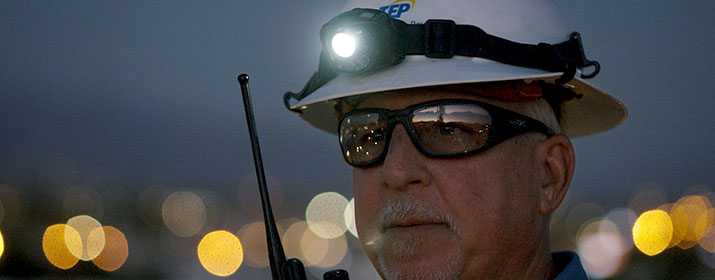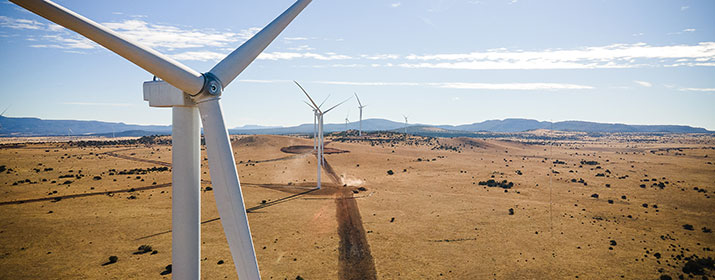
Modern technology is often accompanied by modern myths. Since most people don’t have experience with electric vehicles (EVs), read on to learn about some common misconceptions about this technology that’s driving powerful environmental and economic benefits.
Myth #1: Electric vehicles (EVs) aren’t much better for the climate than gasoline-fueled cars because of the power plant emissions associated with electricity from the grid.
FACT: EVs have a smaller carbon footprint than gasoline-fueled cars, even when accounting for the electricity used for charging, according to the U.S. Environmental Protection Agency.
While greenhouse gas (GHG) is created to produce power for the grid, the addition of wind and solar is reducing carbon emissions. As our grid becomes cleaner and greener, driving EVs does, too.
Our Integrated Resource Plan outlines our plan to provide more than 70 percent of our power from wind and solar and reduce our carbon emissions 80 percent by 2035.
Customers who want to calculate just how green an EV or plug-in hybrid vehicle can try TEP’s calculator. It estimates the amount of GHGs associated with charging and driving an EV in our community.
Myth #2: EV range is too limited for my daily and weekly travel needs.
FACT: You might not drive as far and as often every day as you think you do. According to the U.S. Department of Transportation’s Federal Highway Administration, Americans drive an average of 12,785 miles a year. That’s about 35 miles a day, well within the range of even a partially charged EV. And with the nature of work changing due to the pandemic and changing workplace norms, more employees are working remotely from home.
“Most EVs can drive more than 100 miles on a single charge, with many models having ranges of up to 300 miles,” said Camila Martins-Bekat, Tucson Electric Power’s Senior Marketing Development Representative. “The vast majority of EVs meet the typical driver’s daily needs.”
EV owners who “top off” their charge a couple of times a week usually have more than enough range for their weekly driving.
Myth #3: There aren’t many EV models to choose from.
FACT: There are currently more than 50 EV and plug-in EV models on the market today, with more becoming available within the next two years as foreign and domestic automakers gear up to roll out new EV models.
Consumers no longer have to opt for compacts and small sedans. A wider choice of class sizes are available, including SUVs, large sedans and even light duty trucks, such as Rivian’s R1T and Ford’s F-150 Lighting.
Myth #4: EVs are too expensive.
FACT: While EVs cost more than their gasoline powered equivalents, many are available for less than the average cost of standard new vehicles in 2022, which is now around $47,000, according to Car & Driver magazine.
“While most EVs have higher price tags than standard combustion vehicles, their lower maintenance and operating costs combined with fuel savings more than offset the upfront cost,” she said. “Currently there are quite a few affordable models, such as the Nissan Leaf, Chevrolet Bolt, Hyundai Kona and Mini Cooper S. With some qualifying for the federal tax credit, these models all cost about $30,000.”
Since hybrid plug-in and electric vehicles have been on the market for well over a decade, more preowned EVs also are becoming available as owners trade up for new models. Kelly Blue Book’s list of the Top 10 used EVs that sell for under $30,000 includes Kia’s Niro and Soul, Volkswagon’s e-Golf, Ford’s Focus and Toyota’s RAV4.
Myth #5: There will never be enough public charging stations.
FACT: The EV charging infrastructure along alternative fuel and high traffic corridors – such as highways and urban areas – continues to expand nationwide and will grow significantly over the next decade.
Under the federal Infrastructure, Investment and Jobs Act, the U.S. will spend $5 billion to install 500,000 public chargers nationwide by 2030. Currently, the U.S. Department of Energy’s Alternative Fuels Data Center reports there are more than 46,000 public charging stations in the U.S., with more being added every day.
TEP customers can find local charging stations by visiting our Charging on the Go map.
To encourage the installation of more public chargers in the Tucson area, TEP offers attractive incentives to schools, commercial businesses and multi-family dwellings that install Level 2 or DC fast charging stations through our Smart EV Charging program. Additionally, many companies and shopping centers have installed chargers for the convenience of their customers and employees.
TEP also is participating in the Arizona Electric Vehicle Infrastructure Deployment Plan, a statewide effort among utilities and other stakeholders to develop EV charging stations across main corridors.
Those planning longer or cross-county trips can easily find public charging along their route by visiting the Plug In America website. DC fast chargers, usually located along interstate highways and major retail centers, can fully charge an EV in less than 30 minutes to get travelers on their way after a quick meal.
Myth #6: EVs aren’t as safe as comparable gasoline vehicles.
FACT: All vehicles, whether electric or standard gas, must meet the same Federal Motor Vehicle Safety Standards. To meet these standards, vehicles must undergo extensive testing for vehicle design, construction and performance as well as numerous safety features. But EVs have additional safety requirements.
According to the Alternative Fuels Data Center, EV batteries must pass testing standards, and the vehicle’s electrical system must shut down when a collision or short circuit is detected. EVs also lack flammable fuels – such as gas and oil – that could ignite or explode in a collision.
Myth #7: Combustion engines have more power and better performance than EVs.
FACT: Many EVs deliver high torque, power and performance, with some models accelerating to 60 mph in less than three seconds. That’s despite EVs being up to 16 percent heavier than gas vehicles because of their battery packs.
Even with the extra weight, EVs offer better efficiency and performance because they just need electrons to flow from the battery pack to deliver instant power and torque – the force that drives the vehicle forward. Gas engines need time for the fuel/air mixture to burn and expand in the cylinders, which is less efficient. Nearly 75 percent of the fuel is wasted on heat, friction and noise.
Battery manufacturers are studying ways to make the battery packs lighter to provide even greater range and performance for EVs.






